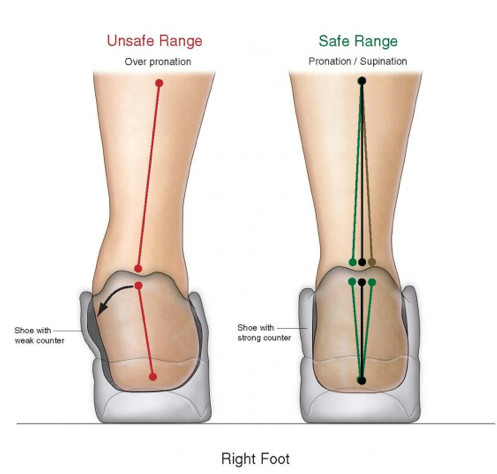
Pronation is a natural and essential movement of the foot that occurs when the foot rolls inward during the gait cycle. It allows for shock absorption, even weight distribution, and proper force transfer during walking and running. However, when pronation becomes excessive—known as overpronation—it can compromise foot stability and contribute to dysfunction throughout the kinetic chain.
What is Normal Pronation?
Normal pronation occurs when the foot rolls inward approximately 15 degrees after the heel strikes the ground. This controlled motion helps absorb shock and allows the foot to adapt to different surfaces. During the mid-stance phase of gait, the arch flattens slightly, and the body moves smoothly over the foot.
Key features of normal pronation:
- Slight inward roll of the foot and ankle
- Arch flattens slightly, then recoils
- Weight transitions evenly from heel to forefoot
- Tibia remains aligned over the foot
What is Overpronation?
Overpronation occurs when the foot rolls inward beyond the normal range, often accompanied by excessive flattening of the arch. This results in poor foot alignment and can lead to instability, altered mechanics, and overuse injuries.
Key indicators of overpronation:
- Noticeable inward collapse of the ankle
- Flattening or loss of the medial arch
- Increased wear on the inside edge of shoes
- Medial knee deviation or internal tibial rotation
- Associated pain in the plantar fascia, tibialis posterior, or medial knee
Overpronation can be structural (due to foot shape) or functional (resulting from muscle weakness, mobility deficits, or previous injuries). Identifying it requires observation during dynamic movement—especially walking, running, or single-leg tasks.
Why It Matters
The difference between normal pronation and overpronation often comes down to degree and control. While normal pronation supports efficient movement, overpronation can disrupt biomechanics and increase stress on joints and soft tissue.
For clinicians, coaches, and movement specialists, the goal is not to eliminate pronation but to optimize it—ensuring it occurs within a healthy, functional range.
Leave a Reply